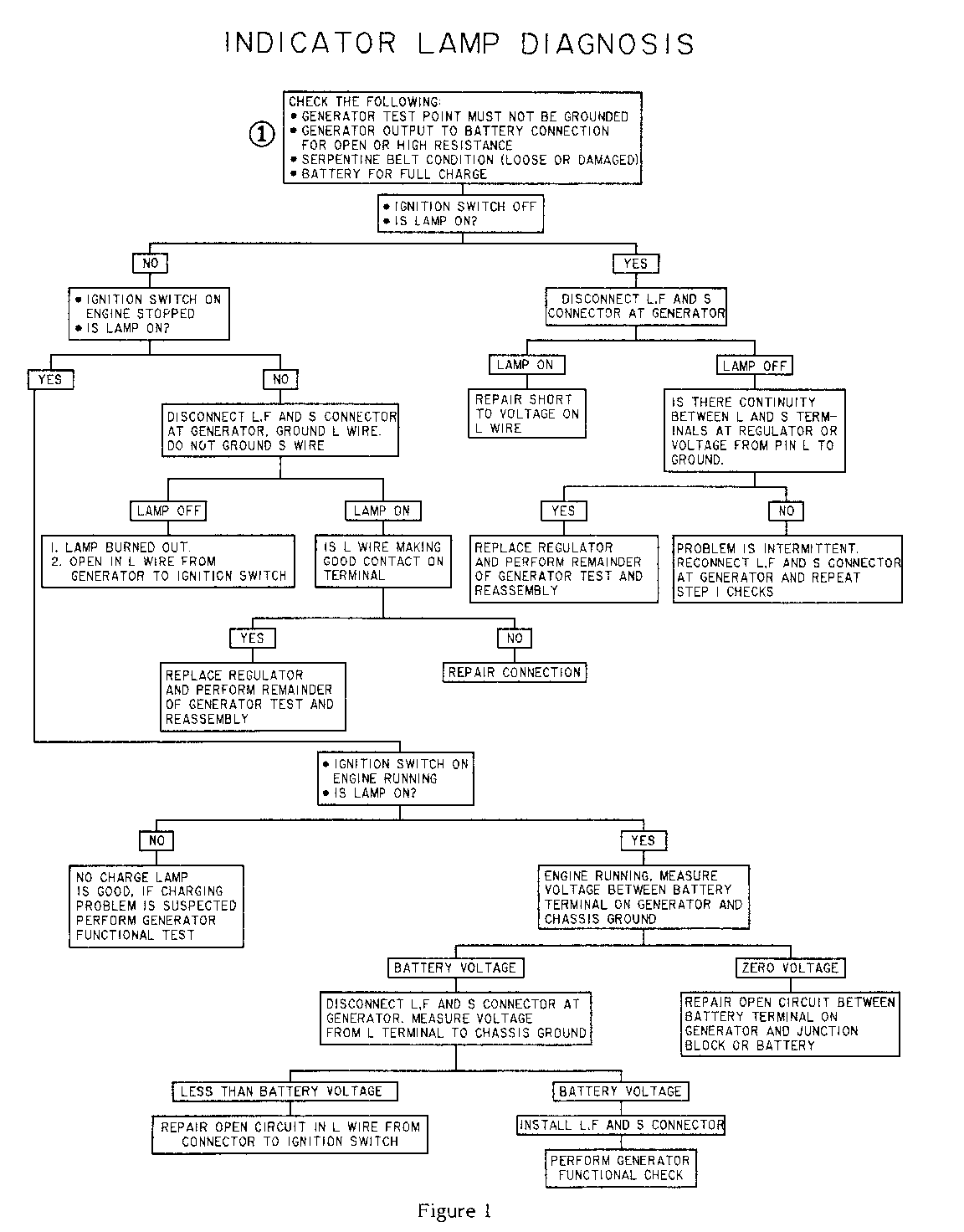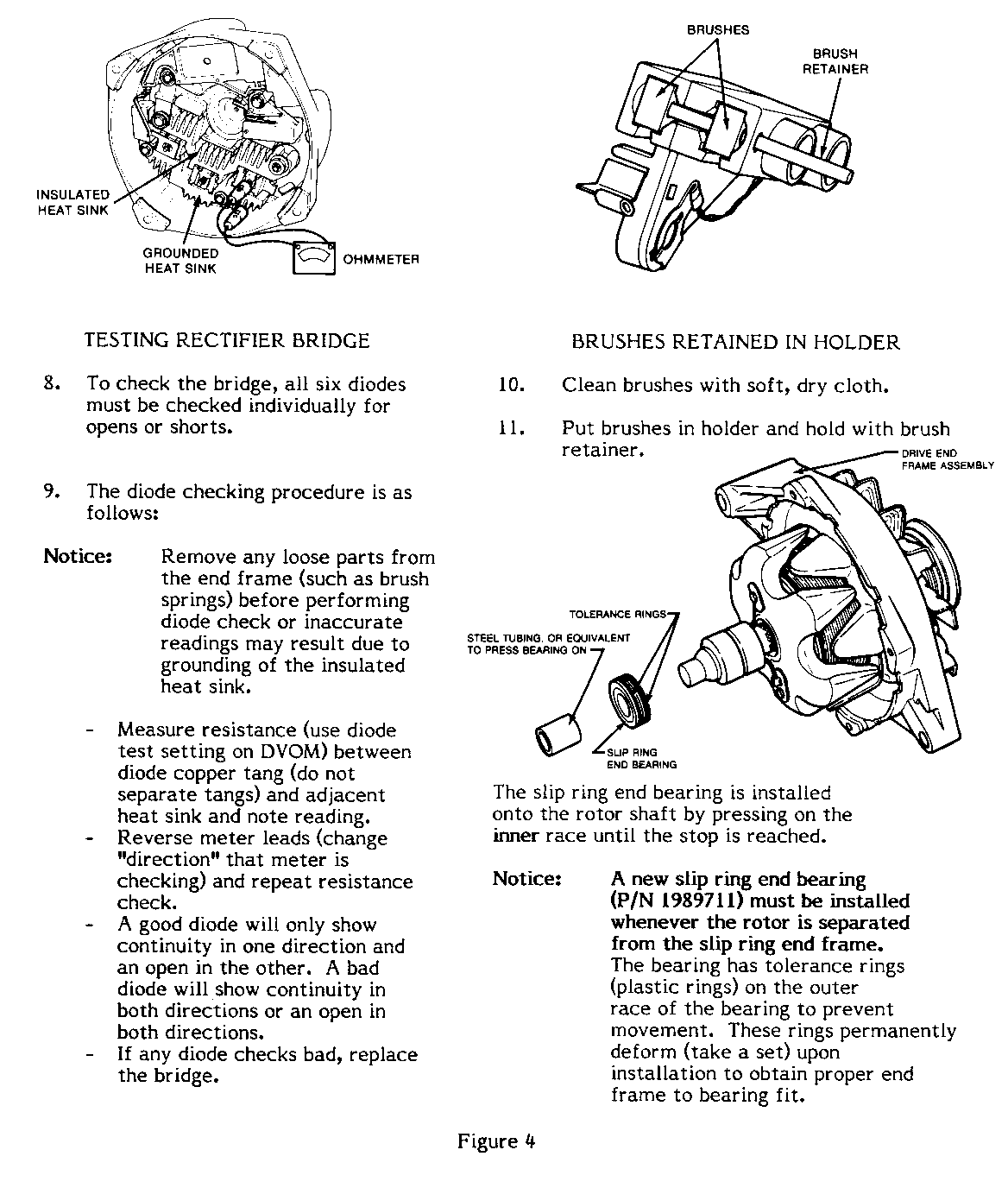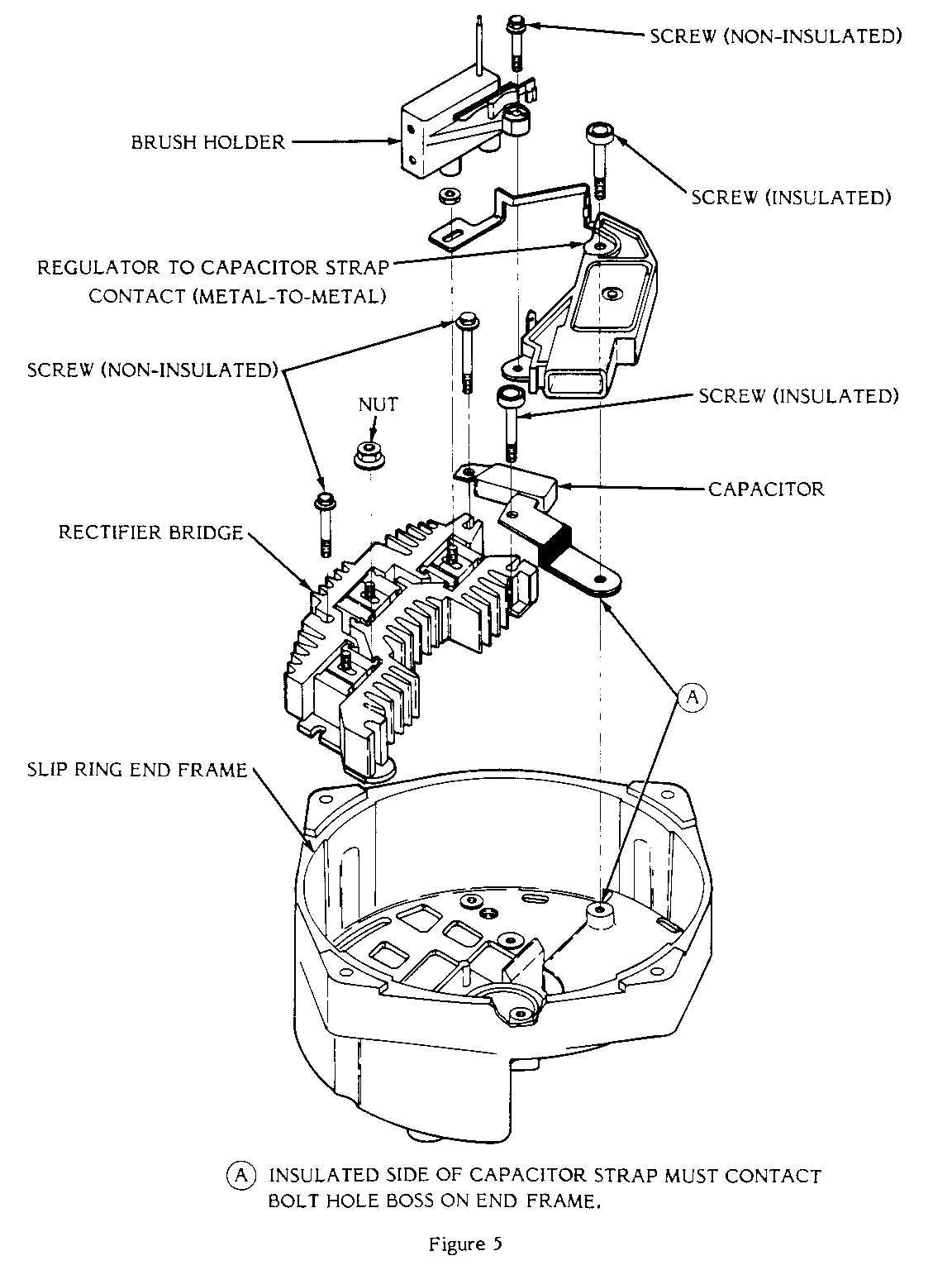GEN. 'NO CHARGE' LAMP ON DIAGNOSIS / REPAIR

MODELS AFFECTED: 1986-1987 DE VILLE AND FLEETWOOD 1986-1987 ELDORADO AND SEVILLE
Some 1986-1987 De Villes, Fleetwoods, Eldorados or Sevilles may experience illumination of the "No Charge" lamp. Illumination of this lamp indicates that the charging system is not operating normally. The following "No Charge" lamp diagnosis procedure is the first step in diagnosing any charging system condition.
"NO CHARGE" LAMP DIAGNOSIS
De Ville/Fleetwood: Use the indicator lamp diagnosis chart in Figure 1.
Eldorado/Seville: If the "No Charge" lamp is illuminated with the engine running, check for BCM trouble codes B410, B411 and B412. If any of these trouble codes are present, follow the respective fault trees in Section 8D of the 1986 Final Edition Service Information Manual. If there are no codes present, go to the CS-144 Generator Functional Check in Figure 2.
If the "No Charge" lamp diagnosis or CS-144 Generator Function Check leads to disassembly, test and reassembly, proceed as follows:
DISASSEMBLY, TEST AND REASSEMBLY
For generator disassembly, test and reassembly procedures, refer to Figures 3, 4 and 5.
NOTE: Whenever the rectifier bridge and voltage regulator are removed from the slip ring end frame during disassembly and test, the following procedure must be used during reassembly or a NO CHARGE condition will result (see Figure 5).
1. Install rectifier bridge and capacitor to end frame. The capacitor strap has an insulating material on one side which MUST be assembled contacting the end frame bolt hole boss (Figure 5,ltem A). Tighten rectifier bridge attaching screws and nut.
2. Install voltage regulator and brush holder to end frame. There should be "metal-to-metal" contact between the capacitor strap and voltage regulator. Tighten the voltage regulator attaching screws.
3. Crimp and solder connections at voltage regulator (avoid excessive heat).
For warranty purposes, use Labor Operation Number J4080 at .8 hour plus any appropriate ADD operation when repairing the generator. When replacing a generator assembly with a remanufactured unit (P/N 10497111), use Labor Operation Number 04100 at .6 hour with the required zone approval.





General Motors bulletins are intended for use by professional technicians, not a "do-it-yourselfer". They are written to inform those technicians of conditions that may occur on some vehicles, or to provide information that could assist in the proper service of a vehicle. Properly trained technicians have the equipment, tools, safety instructions and know-how to do a job properly and safely. If a condition is described, do not assume that the bulletin applies to your vehicle, or that your vehicle will have that condition. See a General Motors dealer servicing your brand of General Motors vehicle for information on whether your vehicle may benefit from the information.
